Balancing Regionally Aligned Force Requirements with Readiness Requirements
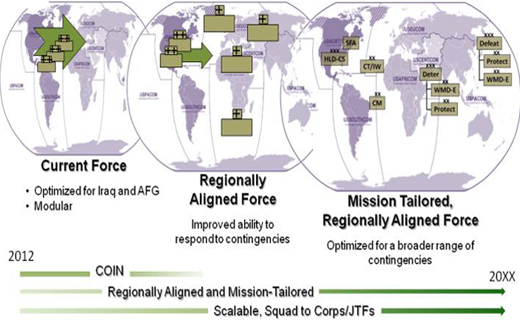
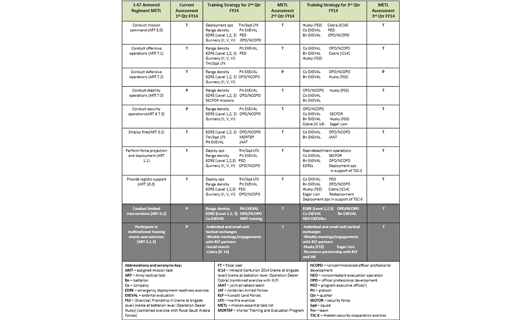
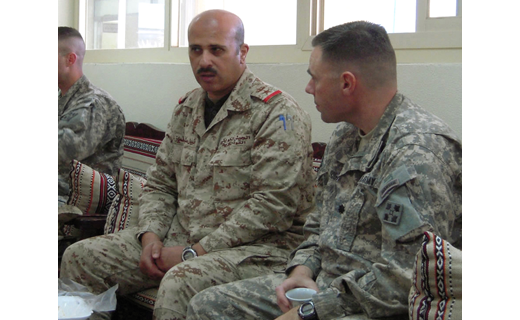
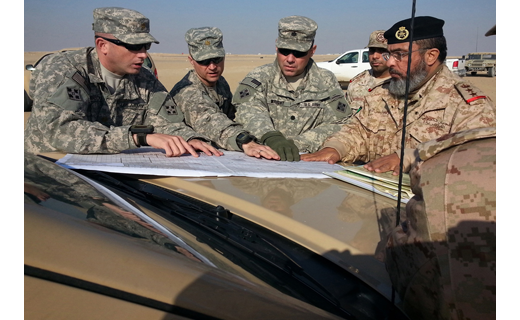
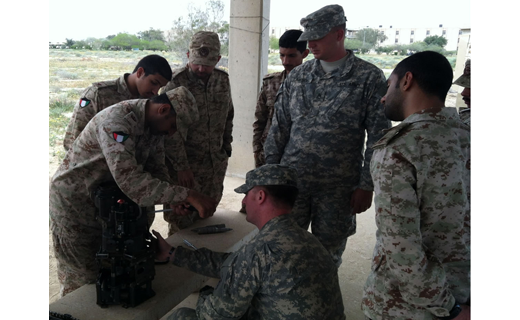
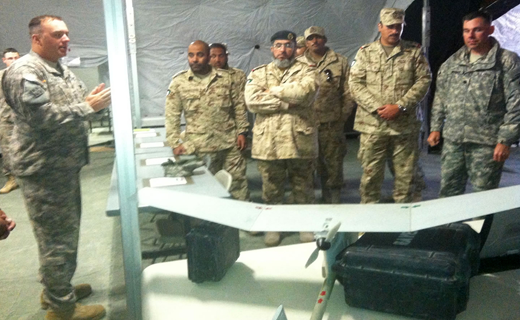
U.S. national-security strategy formulates a policy of regionally aligning our land forces to efficiently and effectively dismantle, disrupt and defeat global terrorism. Since 2012, the U.S. government’s policy has been to accomplish that regional alignment of military forces via strategic partnerships that provide the combatant commander (COCOM) the forces to enable the deterrence, disruption, pursuit and defeat of global terrorist networks, and to prevent instability within a particular region.
In October 2013, 1st Battalion, 67th Armored Regiment – part of 2nd Armored Brigade Combat Team (ABCT), 4th Infantry Division – deployed to U.S. Army Central Command’s (USARCENT) area of operations in support of Operation Spartan Shield (OSS) to conduct a regionally aligned force (RAF) mission. The 1st Battalion, 67th Armor’s mission was to deter aggression and limit malign influence in U.S. Central Command’s (CENTCOM) area of responsibility (AOR), enhancing regional stability and reassuring regional partners. On order, 1-67 deployed as a mission-ready force (MRF) in support of CENTCOM contingency operations.
Our priorities during this deployment were threefold:
- Maintain the combined-arms battalion’s (CAB) readiness for both mission-essential task list (METL) and assigned-mission-task (AMT) requirements;
- Engage with regional and local partners; and
- Retain force protection on key terrain.
The overarching question became, “How does a CAB effectively balance both mission requirements and maintain readiness?” This article will study that question with the intention of not only answering it but also providing a framework for the Army’s RAF 2020 strategic-planning guidance. We were able to reinforce strategic partnerships and retain absolute readiness for any contingency through holistic training and by combining AMTs and mission-essential tasks (METs) into a readiness program developed, executed and assessed during the deployment.1
RAF concept
The concept of RAF is nascent in maturity but has been conceptualized in multiple documents such as the 2013 Army Strategic Planning Guidance, which reinforces the RAF’s importance as a key component of the Army of the future in 2020 and beyond. Furthermore, the Army’s vision statement opines this in part with, “The Army is globally responsive and regionally engaged. …”
Also, a near-term objective for the Army through Fiscal Year (FY) 2015 is to transition to an RAF force fully reinforcing the four Army imperatives. Regional alignment synchronizes the Army’s strategic framework of prevent, shape and win. Aligning land forces with regions enables, empowers and provides the Army flexibility, agility and adaptability across a full range of military operations through the integration of planning, exercises, cultural skills, language skills, predictability and contingency operations. The OSS brigade serves, albeit untasked and nonaligned, as this force for USARCENT.2
USARCENT currently does not have a neatly aligned regional force and fully depends on the OSS brigade as a designated portion to serve as its RAF. This is not a negative comment on USARCENT, as using the OSS brigade is a feasible action and/or solution to an actual committed RAF force for the AOR. The assigned mission from USARCENT to brigade and finally to the CAB is the conduct of multinational exercises and operations. Each battalion was partnered with host-nation forces compatible with their organic capabilities, but – and more importantly – within the region, there was no continuity of operation for multinational exercises and thus no continuity of an RAF at the tactical level.
The proposal is to task one CAB as the RAF that fully focuses on and conducts theater-security cooperation exercises (TSC-E) throughout the AOR – which, if done successfully, ensures continued access to the country/region and provides the U.S. regional commander with the flexibility of options for any contingency. Tasking one battalion to conduct many multinational exercises and operations enables and enforces expertise, capabilities and efficiency while simultaneously enabling the brigade to focus efforts with other non-committed forces on other contingency operations. The balancing act of multiple requirements enters the fray once the tasked CAB must retain its wartime readiness.
Maintaining readiness
As in any unit, the deployed battalions in OSS must retain their readiness through a holistic-training glidepath and training guidance that focuses on both their AMTs and METs. The requirements of 1-67 Armor Regiment during this deployment were many.
Foremost, the CAB had to maintain absolute readiness as the task-force (TF) heavy MRF for USARCENT. Within these tasks, the battalion provided the brigade commander and USARCENT commander with a flexible, tailored and responsive force through the development and implementation of a heavy response company, a wheeled response company, a light response company or a heavy TF that could respond to any contingency throughout the USARCENT and CENTCOM AORs in a matter of hours.
In addition, the CAB conducted multiple TSC-Es throughout the region with the Kuwaiti Land Forces (KLF), Royal Omani Land Forces and Royal Saudi Land Forces. The TSC-Es were tailored to the “asks” or needs of the host nation in which the TSC-E was conducted. This is important to note because some nations sought exercises designed to increase interoperability in stability or counterinsurgency (COIN) environments, while others sought increased interoperability within the unified-land-operations continuum based on combined-arms maneuver (CAM).
The tasks were many, but nonetheless entirely realistic. To this end, 1-67 Armor Regiment met and exceeded the expectations of retaining absolute readiness balanced with the multinational exercise requirements. The subsequent paragraphs outline the process, procedures and training that 1-67 Armor Regiment accomplished to achieve this endstate.
The 1-67 Armor Regiment used the Army’s design methodology to frame the problem and conceptualize the operation through lines of operations (LOs) or focus areas. The battalion’s problem statement was, “How does Task Force Death Dealer maintain absolute readiness while effectively balancing host-nation partnerships and regional partnerships, and while retaining force-protection requirements on key terrain?” Furthermore, once we defined the problem, the battalion framed the problem using LOs: “readiness,” “partnership” and “ready and strong,” with readiness as the primary focus.
Appropriately, the battalion was nested with brigade’s LOs and, as such, assisted in understanding the brigade’s mission, problem and operational approach.
Understanding the problem and operation is the first step in completing the desired endstate but will only advance the operation so far. The true continuation of the operation is the subsequent, yet associated, detailed planning that follows. This is when the balancing, combining and synergy of effort to maintain readiness, yet complete the assigned missions, burgeoned.
TSC-Es
The 1-67 Armor Regiment conducted MET training and subsequently conducted AMT training while simultaneously integrating host nations and regional partners into the exercise continuum, thus maintaining absolute readiness and increasing the interoperability of host nations and regional partners.
The 1-67 Armor Regiment conducted an aggressive and robust training glidepath, commencing with ABCT Level 1 gunnery immediately following assumption of the mission. The battalion sought and gained opportunities to use the space throughout the Udari Range Complex in Kuwait. The battalion concentrated on MET training within the decisive-action contemporary operating environment (COE) throughout the first quarter of FY13 with this training:
- Small-arms gunnery from preliminary marksmanship instruction to advanced close-quarters marksmanship (CQM);
- ABCT Level l gunnery;
- Platoon-level situational-training exercises (STXs) and external evaluations (EXEVALs);
- Company-level STXs and EXEVALs; and
- Culminating with a multinational exercise with 9th Battalion, 35th KLF Brigade, conducting a combined brigade penetration named Intrepid Centurion 2014.
The battalion increased its gunnery proficiency to a distinguished level for both stabilized and unstabilized gunnery, serving well to ensure the battalion was ready to fight and win from any platform. The platoon and company STXs and EXEVALs were offensive operations to penetrate an enemy obstacle and exploit their support zone. The design was a traditional combat-training-center-like lane with the platoons and companies attacking through the enemy’s disruption zone, breaching the battle zone, exploiting the support zone and transitioning to a defense. All lanes used an opposing force replicating the COE enemy from the National Training Center (NTC) and observers/controllers/trainers (O/C/Ts), including fire markers.
Intrepid Centurion 2014 not only served as the battalion’s validation for METs but also provided a mechanism to conduct a TSC-E, increasing the interoperability of regional partners focused on current contingencies. Moreover, the battalion expertly validated all warfighting functions during this training density, including sustainment operations focused on a non-doctrinal battalion-support area designed, executed and retained by the battalion’s forward-support company and validated by the brigade’s support battalion.
Also, the battalion validated a scalable mission-command node consisting of a tactical-operations center (TOC), administration and logistical center, and a tactical command post (CP) that was mobile and efficient to transition from on-the-move to fully-mission-capable in under seven minutes. Nevertheless, the battalion still required a scalable tactical CP that could operate throughout the AOR in a heavy, wheeled or light configuration and retain the capability to mission-command in multiple locations simultaneously, which remained a critical requirement for the battalion’s AMTs.
Transition between MET and AMT
The Death Dealer Battalion was assigned the additional tasks of conducting limited intervention and multinational exercises as its AMTs. As such, the battalion had a “grand design” to conduct MET training and validation as a primary focus and then quickly transition to its AMT-training glidepath and validations. The transition at battalion level was sequential with minimal mission creep, reducing the friction and focus of effort.
Each company and the battalion conducted a five-week intensive focus on AMTs, including light and motorized training exercises, within a COIN-centric operating environment predominantly centered on stability-and-security tasks. This training design set conditions for the battalion’s multinational TSC-E in Oman and Saudi Arabia.
The AMT transition commenced with battalion-facilitated, company-operated unstabilized gunnery and culminated in company STXs within a COIN operating environment, validating the battalion and companies for future contingencies and multinational exercises. Moreover, the battalion conducted multiple non-combatant evacuation STXs and exercises, thus validating a capability essential for contingency operations as well as the AMT of limited intervention.
Using a similar approach as with the MET training, the battalion refrained from myopically focusing on just one warfighting function, but rather embraced a holistic approach in validating all capabilities for AMT operations. The highlighted function is the scalable mission-command nodes the battalion developed to meet theater requirements.
First, the battalion developed, exercised and validated three tactical CP configurations:
- A light configuration used for rotary-wing flyaway missions, ready to deploy with 18 hours;
- A wheeled configuration used for any contingency and/or fixed-wing flyaway mission, ready to deploy within 48 hours; and
- A heavy configuration ready to deploy within 72 hours.
The battalion was able to fully operate two tactical CPs simultaneously throughout the AOR while retaining the TOC.
Integrating partners
The brilliancy of the grand training design from METL to AMT enabled a synergy of effort facilitating, encouraging and embracing regional-partner integration. For example, during METL training, the KLF participated in the small-arms gunnery, observed ABCT Level I gunnery, observed the platoon and company STXs, and fully integrated into the battalion STXs of Intrepid Centurion. During AMT training, our Kuwaiti partners once again observed and integrated into CQM and close-quarters battle drills, and observed the battalion’s stability-and-security training, increasing interoperability of the partnered forces.
More importantly, and more strategically significant, was the full integration of the Royal Omani Land Forces battalion and company during Operation Inferno Creek, and of the Royal Saudi Land Forces brigade and battalion during Operation Friendship III. The TSC-E in Oman focused on light-infantry operations within a COIN operating environment. The TSC-E in Saudi Arabia focused on COIN and wide-area security (WAS) operations. Both of these exercises increased interoperability and military-to-military/state-to-state cooperation, which was exactly what a RAF is charged to do.
Conclusion
To fully realize and complete the endstate of an MRF nested with multiple requirements from brigade and USARCENT while successfully balancing multinational exercises, the battalion effectively, efficiently and endlessly trained to maintain readiness. Over the course of the nine-month deployment, the battalion spent 183 days training in the Kuwaiti desert and surrounding region. The unit conducted 24 platoon and company CAM EXEVALs – including 24 combined-arms breaches using the Assault Breach Vehicle. The 1-67 also conducted two battalion-sized exercises integrating both CAM and WAS, three company air-assault exercises, three multinational TSC-Es throughout the region, seven joint air-attack team (JAAT) live-fire exercises, 54 tactical exchanges and engagements with Kuwaiti partnered brigades, and holistic wheeled and track services.
To conclude, a habitual RAF for USARCENT is essential and understandably nascent, but maturing hopefully by FY16. The concept – and soon the reality – of RAF is the future of an Army that remains globally responsive and relevant through regional engagements. This provides a full range of capabilities to COCOMs in a joint, whole-of-government and/or multinational environment. Furthermore, RAF reinforces and synchronizes the Army’s strategic framework of prevent, shape and win.
The friction lies with effective balancing of RAF requirements with readiness requirements. We as the authors of this article attempted and hopefully demonstrated a “way” to achieve success through the simultaneity of both missions. Without a doubt, 1-67 Armor Regiment effectively combined AMT training and MET training that indeed reinforced strategic partnerships and retained absolute readiness for any contingency.
Notes
1The National Security Strategy, the White House, Washington, DC, 2010.
2Army Strategic Planning Guidance 2013, Department of the Army, Washington, DC, 2013.
Further reading
Professional-development toolkit, “Chief of Staff of the Army Gen. Raymond T. Odierno: Prevent, Shape, Win,” www.army.mil, January 2013.
Professional-development toolkit, “Army will prepare for future with regionally aligned forces,” www.army.mil, February 2013.
 email
email print
print